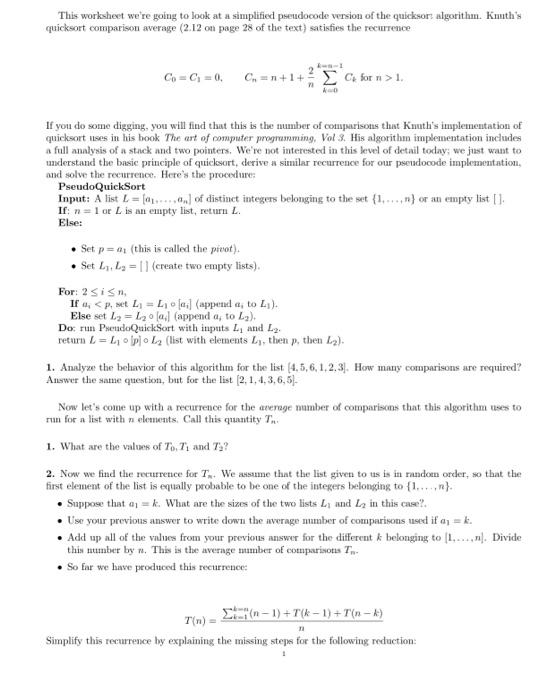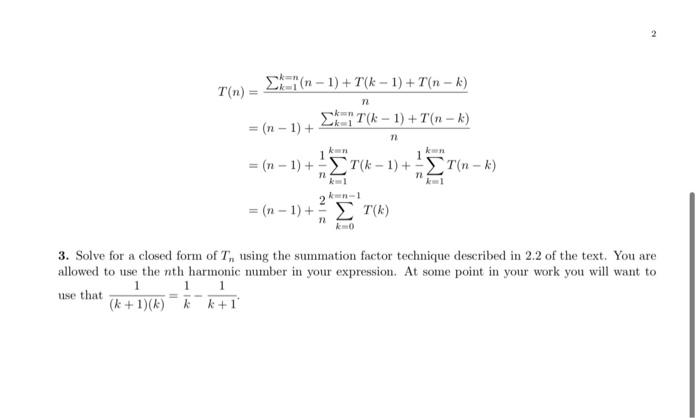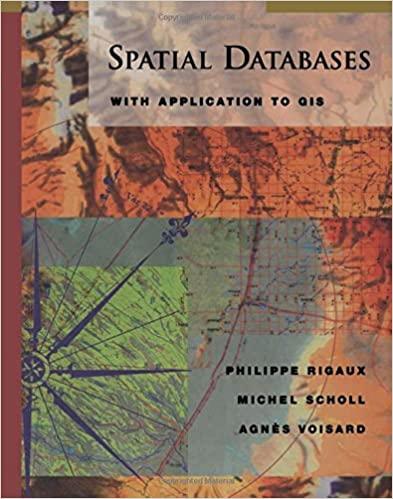Question
This worksheet we're going to look at a simplified pseudocode version of the quicksor: algorithm. Kmth's quicksort comparison average (2.12 on page 28 of the


1. If you do some digging, you will find that this is the number of comparisons that Knuth's implementation of quicksortlises in his book The art of computer programming, Vol 3. His algorithm implementation includes a full analysis of a stack and two pointers. We're not interested in this level of detail today, we just want to understand the basic principle of quicksort, derive a similar recurrence for our pseudocode implementation, and solve the recurrence. Here's the procedure: PseudoQuickSort Input: A list L = fal of distinct integers belonging to the set {1,...,n} or an empty list [] If: n=1 or L is an empty list, return L. Else: Set p= (this is called the pivot). Set L L = 11 (create two empty lists). For: 2 Sin If ,
Step by Step Solution
There are 3 Steps involved in it
Step: 1

Get Instant Access to Expert-Tailored Solutions
See step-by-step solutions with expert insights and AI powered tools for academic success
Step: 2

Step: 3

Ace Your Homework with AI
Get the answers you need in no time with our AI-driven, step-by-step assistance
Get Started


